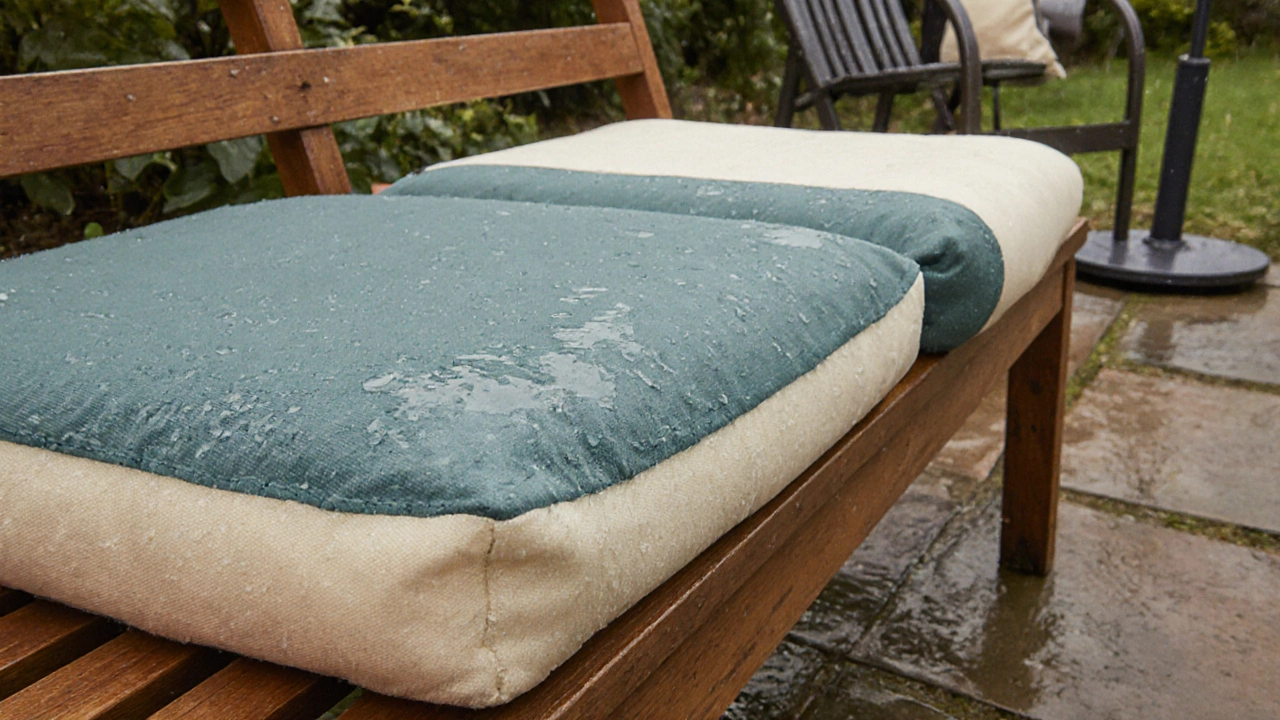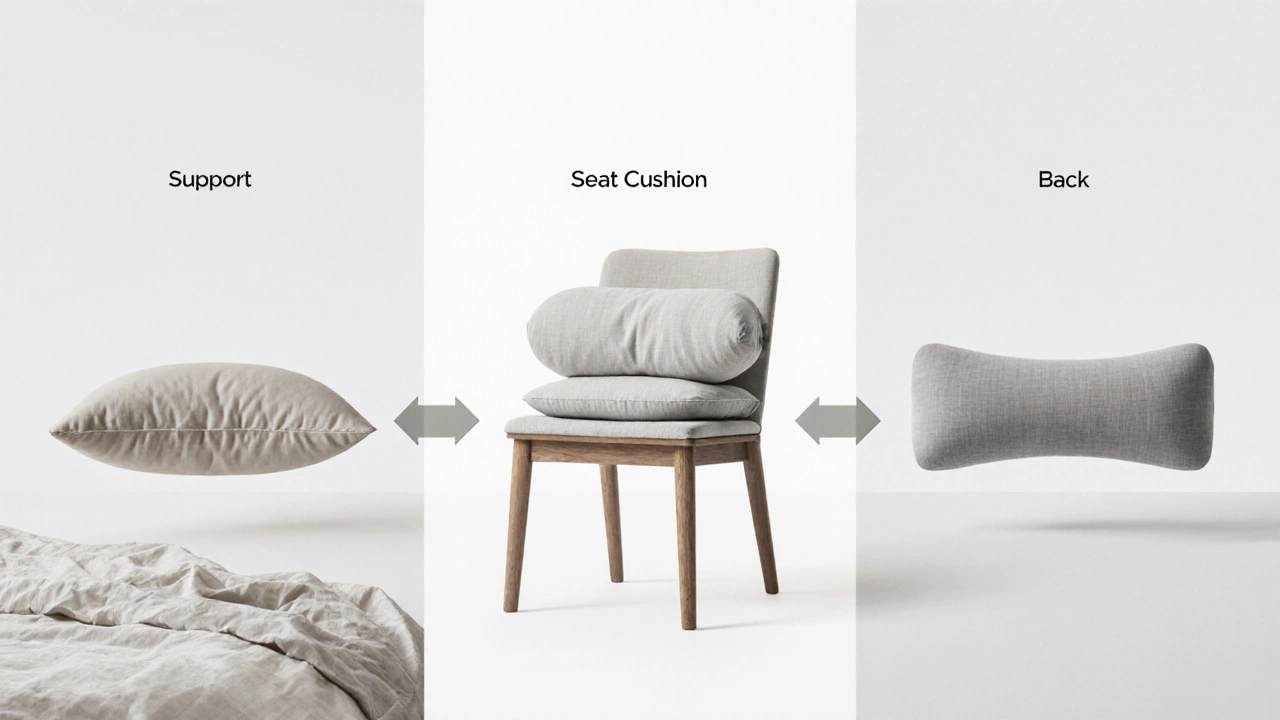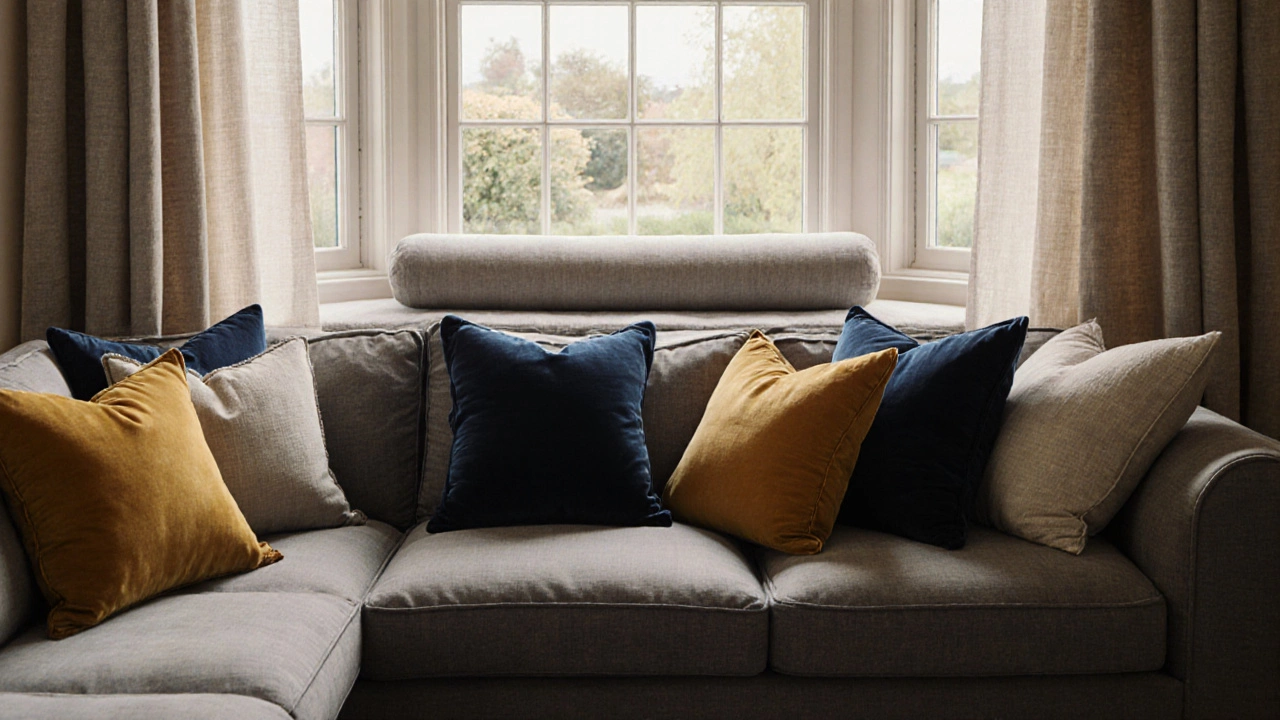Ever sat on a sofa and wondered what that soft, fluffy thing you’re leaning on is actually called? It’s not just a ‘cushion’-depending on where it is, what it’s for, or how it’s shaped, it might have a totally different name. In homes across the UK and beyond, these soft fills aren’t one-size-fits-all. They come in shapes, sizes, and styles that match their purpose. Knowing what they’re called helps you shop smarter, talk to designers, or even just understand your own living room better.
Throw Pillows
These are the ones you see stacked on sofas, armchairs, and beds. They’re mostly decorative, not meant for serious support. Made from cotton, linen, velvet, or even silk, throw pillows come in all colors and patterns. You’ll find them in living rooms, bedrooms, and sometimes even on outdoor furniture. In the UK, they’re often called ‘throw pillows’ because you ‘throw’ them onto a seat for a quick style boost. They’re not attached to the furniture and are easy to move around. A typical throw pillow is square or rectangular, usually between 16 and 20 inches across.
Seat Cushions
If you’re sitting on a hard bench, wooden chair, or patio seat, the padded insert you put on top is a seat cushion. These are built for comfort, not just looks. They’re thicker than throw pillows-often 2 to 4 inches deep-and made with denser foam or high-resilience fiberfill. Seat cushions are usually covered in weather-resistant fabric if used outdoors, or durable upholstery indoors. You’ll find them on garden benches, dining chairs, and even car seats. Unlike throw pillows, seat cushions are designed to take weight and stay in place. Some even have ties or non-slip bottoms to keep them from sliding.
Bolsters
Long, cylindrical cushions are called bolsters. They’re often placed behind you on a sofa or bed for back support. In some homes, you’ll see them lined up along the head of the bed like a row of pillows. Bolsters are firmer than regular throw pillows and don’t flatten easily. They’re great for propping up your lower back while reading or watching TV. In traditional Indian and Middle Eastern interiors, bolsters are common and often hand-embroidered. In modern British homes, they’re usually plain or subtly textured to blend with minimalist decor.
Accent Cushions
This term is sometimes used interchangeably with throw pillows, but it’s more about function than form. An accent cushion adds a pop of color, texture, or pattern to a room. It’s chosen to match or contrast with other elements-like a rug, curtains, or artwork. For example, a mustard-yellow accent cushion might tie together a grey sofa and a navy rug. They’re not always square. Some are round, kidney-shaped, or even heart-shaped for seasonal themes. Accent cushions are the easiest way to refresh a room without buying new furniture.
Back Cushions
These are designed specifically to support the lower or upper back. You’ll find them behind sofas, in recliners, or even in office chairs. Back cushions are usually contoured or have a slight curve to match the spine. They’re often larger than throw pillows and may come with straps or ties to attach to the furniture. In homes with older adults or people with back pain, back cushions are practical, not just decorative. Some even have memory foam inserts or cooling gel layers for extra comfort.

Poufs and Floor Cushions
These are low, rounded cushions meant to sit on the floor. Poufs are typically firm and can double as footrests or extra seating. Floor cushions are softer and often used in boho-style rooms or kids’ play areas. In Japan, similar items are called ‘zabuton’-flat, rectangular cushions used for sitting on tatami floors. In British homes, poufs are popular in open-plan living spaces where flexible seating is needed. They’re often covered in durable fabrics like leather or faux fur and come in sizes from 12 to 24 inches wide.
Window Seat Cushions
Many older homes in the UK have built-in window seats. These are often narrow, long benches under windows, and they almost always come with a custom-fit cushion. Window seat cushions are tailored to the exact dimensions of the bench-sometimes with attached backrests. They’re usually padded with high-density foam and covered in washable fabric because they get a lot of sun and use. People use them for reading, sipping tea, or just looking out at the garden. They’re one of the most practical types of cushions in a home.
Car Seat Cushions
These are designed for use in vehicles. They’re thinner than regular seat cushions, usually under 2 inches thick, so they don’t interfere with seatbelts or airbags. Many include memory foam, lumbar support, or even heating elements. In the UK, where long commutes are common, car seat cushions are a popular buy. Some have non-slip bases or straps to secure them to the seat. They’re not decorative-they’re purely for comfort and posture.
Outdoor Cushions
These are made for patios, garden chairs, or poolside loungers. The key difference? They’re water-resistant, UV-stable, and mildew-proof. Outdoor cushions are usually filled with quick-dry foam or polyester fiber that doesn’t hold moisture. Covers are often made from solution-dyed acrylic fabric like Sunbrella, which resists fading from sunlight. In Bristol’s rainy climate, outdoor cushions need to dry fast. You’ll see them on garden benches, patio sets, and even on the steps of seaside cottages.

Why the Names Matter
Knowing the difference between a throw pillow and a seat cushion isn’t just about vocabulary. It’s about choosing the right one for the job. A throw pillow won’t last long on a dining chair. A seat cushion won’t add style to a bedhead. Using the wrong term when shopping can lead to buying something that doesn’t fit, doesn’t last, or doesn’t work. Retailers, interior designers, and even online search filters use these terms to sort products. If you search for ‘cushions’ on a furniture site, you might get 50 different types. But if you search for ‘outdoor seat cushions’, you’ll get exactly what you need.
What to Look for When Buying
Here’s what to check before you buy any cushion:
- Filling: Foam gives firm support; down feels soft but needs fluffing; polyester fiber is affordable and easy to clean.
- Cover: Look for removable, machine-washable covers. Cotton is breathable; polyester blends are durable.
- Size: Measure the surface you’re putting it on. A cushion that’s too small looks lost; one that’s too big looks messy.
- Use: Is it for sitting? Back support? Decoration? Match the cushion’s design to its job.
- Weather: For outdoors, check for UV and water resistance. Indoor cushions don’t need this.
Most people buy cushions based on looks. But the best ones balance style with function. A beautiful throw pillow that flattens after one use isn’t worth the price. A plain seat cushion that lasts five years? That’s smart.
Common Misconceptions
Many think all cushions are the same. They’re not. A ‘cushion’ on a sofa isn’t the same as a ‘cushion’ on a chair. In some stores, the terms are used loosely, which causes confusion. Also, people assume that bigger means better. But a 24-inch cushion on a small armchair looks out of place. Scale matters.
Another myth: ‘All cushions are soft.’ Not true. Bolsters and seat cushions are often firm to provide support. Softness is for comfort, but support is for health. If you sit for hours, a too-soft cushion can make back pain worse.
Final Thought
Cushions are everywhere in homes. They’re quiet helpers-making chairs comfortable, adding color to rooms, even giving us a place to rest our heads. But they’re not all the same. Calling them by the right name helps you choose better, care for them longer, and use them properly. Next time you’re shopping or rearranging your living room, don’t just grab the softest one. Think about what it’s for. That’s how you turn a simple cushion into something that truly works for your space.
What’s the difference between a throw pillow and a seat cushion?
Throw pillows are decorative and usually softer, meant for styling sofas or beds. Seat cushions are thicker and firmer, designed to provide support when sitting on hard surfaces like chairs or benches. You can’t use a throw pillow as a seat cushion-it won’t hold up under weight and will flatten quickly.
Can I use outdoor cushions indoors?
Yes, you can. Outdoor cushions are made with durable, weather-resistant fabrics and quick-dry foam, so they’re actually great for high-traffic indoor areas like family rooms or kids’ spaces. The downside? They often have a more utilitarian look. If you like the texture and durability, go for it-but make sure the color and style match your decor.
Are bolsters only for decoration?
No. While bolsters can look stylish, they’re also functional. Their firm, cylindrical shape makes them ideal for supporting your lower back or neck. Many people use them behind their lower back while sitting on the sofa or in bed to improve posture. They’re not just for show.
How often should I replace my cushions?
It depends on use. Throw pillows last 2-3 years if washed regularly. Seat cushions and back cushions should be replaced every 3-5 years, especially if they’ve lost shape or feel flat. Outdoor cushions may last longer-up to 5-7 years-if protected from heavy rain and sun. Always check the filling: if it’s clumpy or doesn’t bounce back, it’s time for a new one.
What’s the best fabric for cushions in a home with pets?
Microfiber, canvas, or solution-dyed acrylic are top choices. They’re tightly woven, so pet hair doesn’t sink in, and they’re easy to clean with a lint roller or vacuum. Avoid velvet or suede-they catch claws and show stains. Removable, machine-washable covers are a must if you have dogs or cats.
Do I need to buy cushions in sets?
Not at all. Buying in sets can look neat, but mixing sizes, shapes, and textures often creates a more interesting, lived-in look. Try pairing a large square pillow with a smaller bolster and a round pouf. It adds depth and personality. Don’t feel pressured to match everything.

